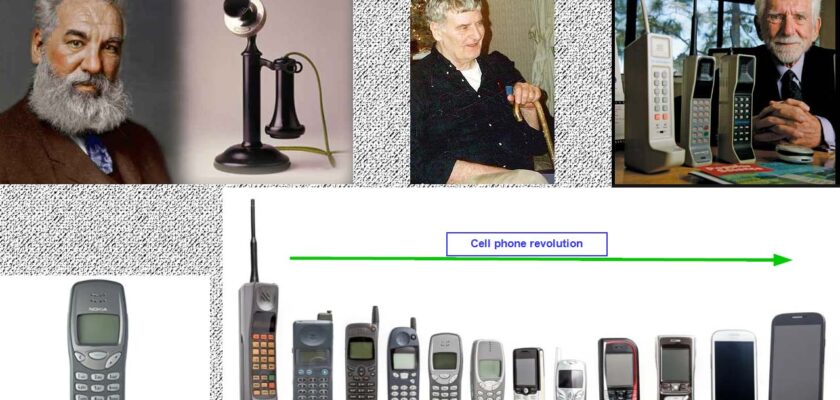The cell phone, an essential and ubiquitous device in today’s world, has transformed the way we communicate, work, and interact with the world around us. Its invention marks a significant milestone in human history, enabling us to stay connected regardless of distance.
The story of the cell phone’s invention is a fascinating journey that involves multiple contributors, each playing a crucial role in its evolution.
While there isn’t a single inventor of the cell phone, the development of this revolutionary device was a collaborative effort that spanned decades.
The Birth of Telecommunication
The concept of long-distance communication has intrigued human beings for centuries. The earliest forms of telecommunication involved smoke signals, drums, and semaphore systems.
However, it wasn’t until the 19th century that significant advancements were made in the field of telecommunication. In 1876, Alexander Graham Bell patented the telephone, a device that allowed voice communication over long distances using electrical signals.
This invention laid the foundation for what would later become the cell phone.
Who is Alexander Graham Bell
Alexander Graham Bell was a Scottish-born inventor, scientist, teacher, and engineer who is best known for his invention of the telephone.
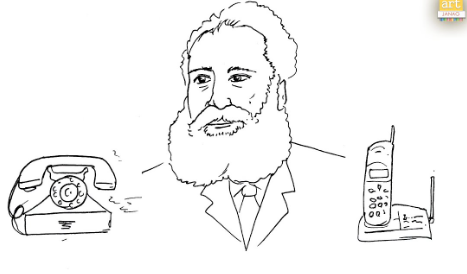
He was born on March 3, 1847, in Edinburgh, Scotland, and he passed away on August 2, 1922, in Baddeck, Nova Scotia, Canada.
Bell’s most famous invention, the telephone, revolutionized communication by allowing voice transmission over long distances. He conducted extensive research in the field of acoustics and sound transmission, inspired by his mother’s deafness and his interest in helping the hearing impaired.
Bell’s breakthrough came in 1876 when he received a patent for his invention of the telephone.
The telephone worked by converting sound vibrations into electrical signals and then back into sound at the receiving end.
Bell’s invention had a profound impact on society, transforming the way people communicated and connected with each other across distances. It marked the beginning of the telecommunications industry and laid the foundation for modern communication systems.
In addition to the telephone, Bell made significant contributions to various fields. He worked on inventions related to aviation, hydrofoils, and even a metal detector used to locate bullets in the body of President James Garfield after he was shot in 1881. Bell was also involved in the early development of the photophone, a device that transmitted sound on a beam of light, and he conducted research on speech and hearing technologies.
Beyond his inventive achievements, Bell was a prominent figure in the fields of education and communication science.
He was a passionate advocate for the education of the deaf and helped establish schools for the deaf. He also played a role in the formation of the National Geographic Society.
It’s important to note that while Bell is often associated with the invention of the telephone, there were other inventors and contributors in the field of telecommunications during that time.
Elisha Gray, for instance, was working on a similar device and filed a patent caveat on the same day as Bell. The legal battles that ensued over patent rights created controversy and debate about the true inventor of the telephone.
Alexander Graham Bell’s legacy extends beyond his inventions. His work laid the groundwork for modern communication technology and shaped the way we interact in today’s interconnected world.
Bell’s name is forever linked to the transformative impact of the telephone and his dedication to scientific exploration and innovation.
The Precursors to Cell Phones
The idea of a wireless, portable communication device can be traced back to the early 20th century. In the early 1940s, a visionary named Bell Labs engineer George Sweigert proposed the concept of a “pocket telephone.”
He envisioned a device that would allow users to make calls while on the move, eliminating the need for fixed telephone lines.
Although Sweigert’s idea was ahead of its time and the technology wasn’t readily available, his vision planted the seed for the future development of cell communication.
Martin Cooper: A Pioneer in Cell Communication
When discussing the invention of the cell phone, the name Martin Cooper stands out prominently. Cooper is often credited with making the first handheld cell phone call on April 3, 1973.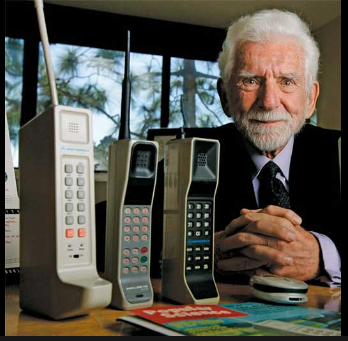
He was an engineer at Motorola, a company that was at the forefront of telecommunication technology. Cooper’s creation, known as the Motorola DynaTAC 8000X, was a bulky device weighing around 2.2 pounds.
While it was far from the sleek and lightweight smartphones we use today, it was a breakthrough that laid the groundwork for the modern cell phone.
Cooper’s historic call was made to his rival at Bell Labs, Joel Engel, using the DynaTAC. The call marked a pivotal moment in communication history, demonstrating the feasibility of wireless, portable communication.
It’s important to note that while Martin Cooper is celebrated for his role, the development of cell technology was a collaborative effort involving various researchers, engineers, and companies.
Who invented the cell phone
Advances in Technology and Commercialization
After the initial breakthrough, cell phone technology began to evolve rapidly. The DynaTAC was followed by subsequent iterations that became smaller, more user-friendly, and offered enhanced features.
The 1G (first-generation) cellular networks were introduced in the 1980s, allowing for wider adoption of cell phones. These devices were primarily used for voice calls and had limited coverage areas.
The true turning point came with the introduction of digital cellular networks, known as 2G, in the early 1990s. This allowed for more efficient use of the available spectrum and paved the way for text messaging, a feature that revolutionized communication once again.
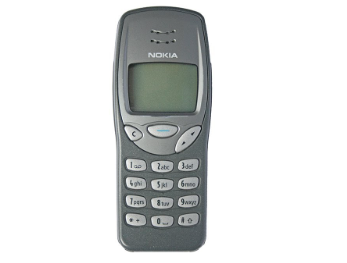
Nokia, a Finnish company, became a key player in the cell phone market during this period, producing iconic devices like the Nokia 3210 and 3310.
The Smartphone Revolution
While the early cell phones focused on voice calls and basic communication, the 21st century witnessed a seismic shift with the advent of smartphones.
These devices combined communication capabilities with computing power, offering features like internet access, email, and a wide range of applications.
The BlackBerry, introduced in 2002, is often credited with popularizing the concept of a smartphone by integrating email functionality seamlessly.
However, it was Apple’s iPhone, introduced in 2007, that truly transformed the landscape of cell technology.
Steve Jobs’ visionary creation combined sleek design, intuitive touch interface, and a robust app ecosystem. The iPhone’s success inspired a wave of innovation from other companies, leading to the Android operating system and a multitude of smartphone options catering to different preferences and needs.
The Ongoing Evolution
The journey of the cell phone doesn’t end with the introduction of smartphones. The subsequent years saw rapid advancements in technology, including the rollout of 3G, 4G, and now 5G networks.
These advancements have not only enhanced communication capabilities but also paved the way for emerging technologies like the Internet of Things (IoT) and augmented reality (AR).
Today, cell phones are more than just communication devices. They are personal assistants, entertainment hubs, navigation tools, and much more.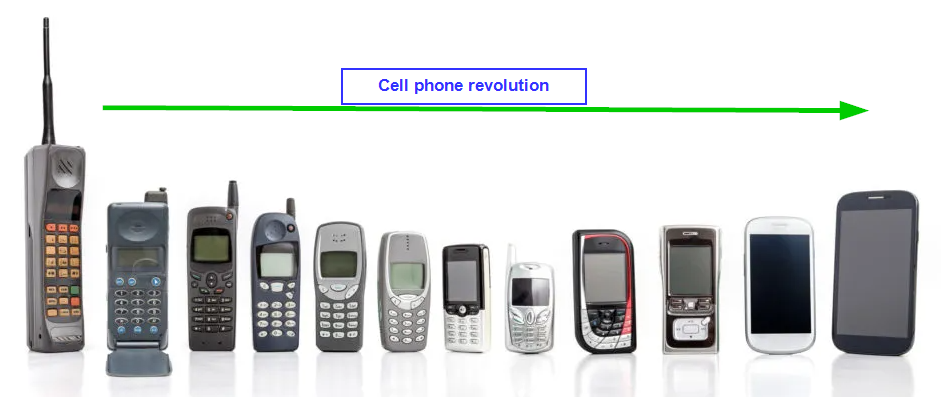
The integration of powerful cameras, biometric authentication, and AI-driven features has further elevated their versatility and utility in our daily lives.
The invention and evolution of the cell phone have been a collaborative effort involving numerous individuals, companies, and technological breakthroughs.
While Martin Cooper’s historic call marked a crucial milestone, the story of the cell phone’s invention is a tapestry woven with the contributions of engineers, inventors, and innovators over several decades.
From the early telecommunication experiments of Alexander Graham Bell to the visionary ideas of George Sweigert and the groundbreaking work at companies like Motorola and Nokia, the cell phone’s journey has been one of relentless innovation.
The smartphone era, ushered in by the iPhone, brought about a new era of communication and computing, transforming the way we interact with technology and with each other.
As we continue to embrace the possibilities of 5G networks, AI-driven applications, and technologies we can’t yet foresee, it’s important to reflect on the inventors, pioneers, and visionaries who have shaped the world of cell communication.
The cell phone is a testament to human ingenuity and the insatiable desire to bridge distances, connect with others, and make the world a smaller, more interconnected place.
Read More:
Martin Cooper is invented cell phone. On April 3, 1973, he placed the first public call from a handheld portable cell phone while working at Motorola, from a Manhattan sidewalk to his counterpart at competitor Bell Labs.
The first handheld cellular phone call was made on April 3, 1973, by Motorola engineer Martin Cooper from Sixth Avenue in New York City while walking between 53rd and 54th streets.
